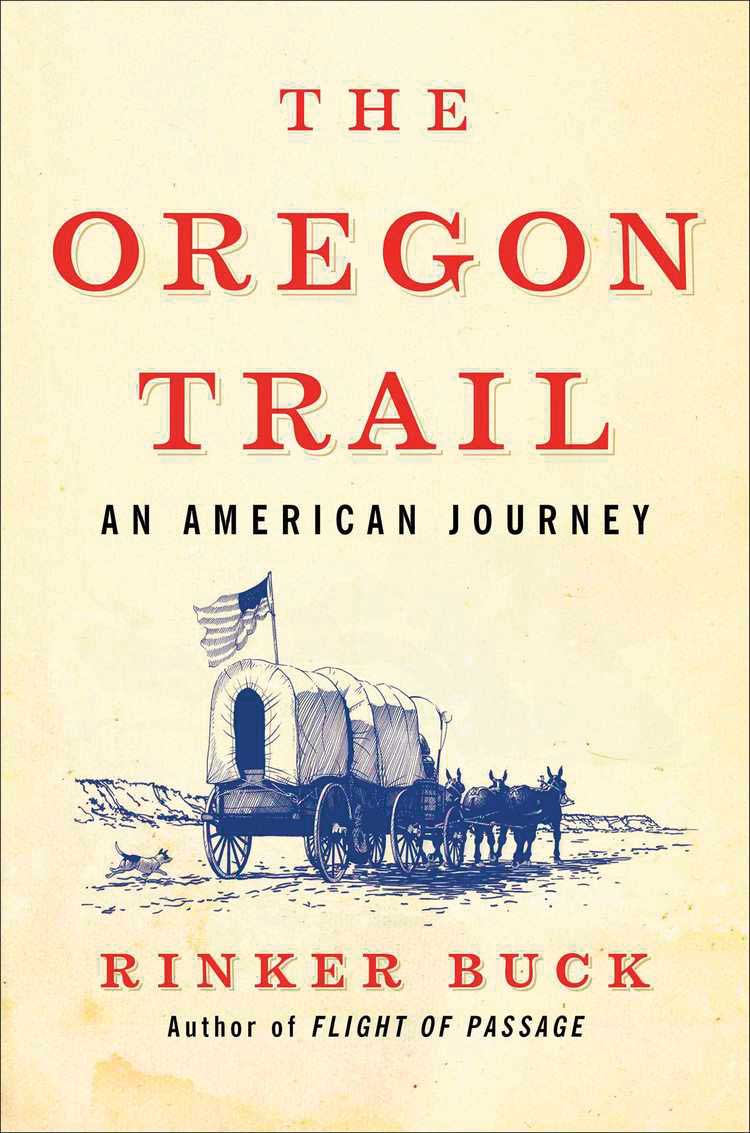The Oregon Trail: A New American Journey, by Rinker Buck, Simon & Schuster, New York, 2015, $28
 The 2,200-mile emigrant wagon route from Missouri to Oregon remained a busy frontier highway from the 1830s until 1869 when work crews completed the first transcontinental railroad. Like many writers before him who became “rut nuts,” Rinker Buck became fascinated with the Oregon Trail and read most of the pioneer journals and old travel guides. But in 2011, unlike anyone in more than 100 years (since Ezra Meeker in 1910), he set out to travel the route in a covered wagon, along with his handy if eccentric brother Nick—who did most of the driving and repair work—a Jack Russell terrier named Olive Oyl and three draft mules with distinct personalities. Yes, in places highways and railroad tracks cover over the old trail, but it is well marked, and, Ricker writes, “Except for two bad stretches of suburban sprawl around Scottsbluff, Neb., and Boise, Idaho, most of the rest of the trail is still accessible along remote farm and ranch roads in the West.” Some original wagon ruts remain in western Nebraska and central Wyoming.
The 2,200-mile emigrant wagon route from Missouri to Oregon remained a busy frontier highway from the 1830s until 1869 when work crews completed the first transcontinental railroad. Like many writers before him who became “rut nuts,” Rinker Buck became fascinated with the Oregon Trail and read most of the pioneer journals and old travel guides. But in 2011, unlike anyone in more than 100 years (since Ezra Meeker in 1910), he set out to travel the route in a covered wagon, along with his handy if eccentric brother Nick—who did most of the driving and repair work—a Jack Russell terrier named Olive Oyl and three draft mules with distinct personalities. Yes, in places highways and railroad tracks cover over the old trail, but it is well marked, and, Ricker writes, “Except for two bad stretches of suburban sprawl around Scottsbluff, Neb., and Boise, Idaho, most of the rest of the trail is still accessible along remote farm and ranch roads in the West.” Some original wagon ruts remain in western Nebraska and central Wyoming.
Regardless, the brothers sometimes got lost or sidetracked (the trail has many offshoots and optional routes, as was the case in its 19th-century heyday). The Bucks tackled many of the same challenges faced by emigrants—broken wheels and axles, thunderstorms, forced marches to reach water, runaway mules. One new challenge was going it alone, not as part of a wagon train. But they received ready and willing help from ranchers and others en route. “Our covered wagon trip was not so much an adventure shared by two brothers,” Buck writes, “but a display of the communal ingenuity and hospitality still to be found in the American West.”
The author provides plenty of solid information about wagons (big Conestogas were generally Eastern wagons, while the pioneer prairie schooners were lighter and fleeter) and mules (they were superior to horses for pulling wagons cross-country). He seamlessly presents historical information on such trail subjects as missionaries Marcus and Narcissa Whitman, scout and showman William Frederick “Buffalo Bill” Cody, South Pass and the Mormon hegira to Salt Lake that began in 1847. He also delivers some moving flashbacks. “An apparition was riding with me across the [Oregon] trail,” Buck writes. “At critical moments of the trip I was flooded with memories of my father and reflexive comparisons of our adventure now and our covered wagon trip to Pennsylvania in 1958.” It’s a compelling read, although afterward even readers who travel only by car, train or plane may have to treat, as the author puts it, “the effects of wagon withdrawal.”
—Editor
Originally published in the December 2015 issue of Wild West.





